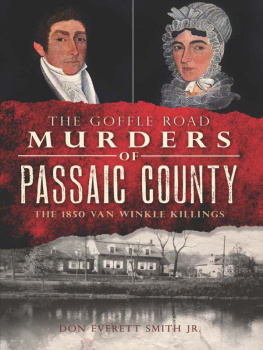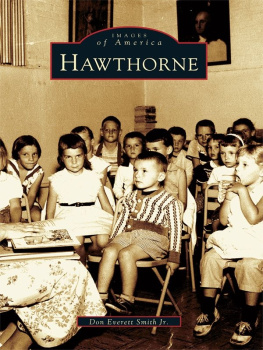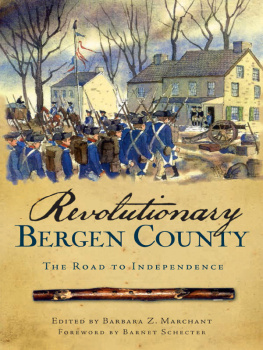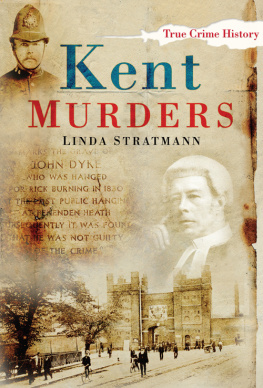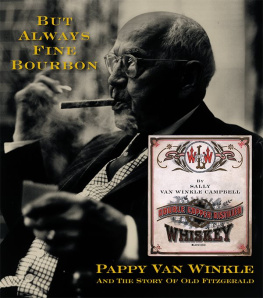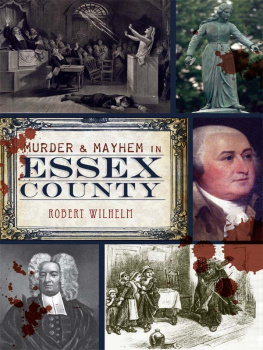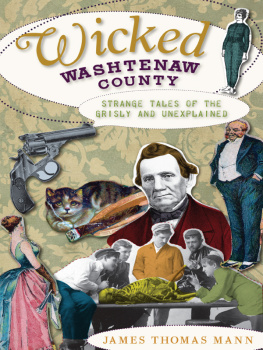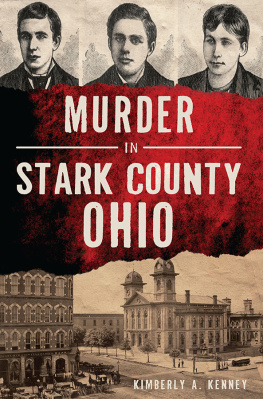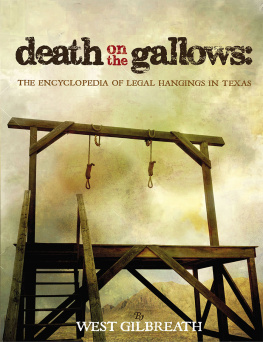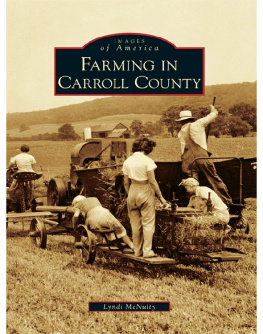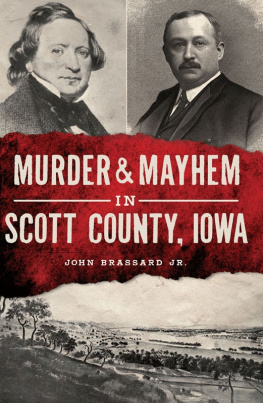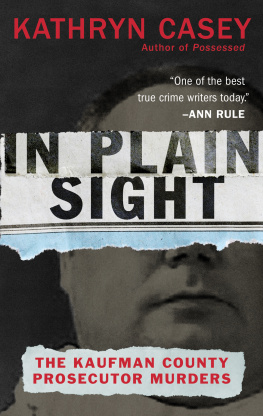Praise for Don Smith and The Goffle Road Murders of Passaic County:
The writing style of Don Smith is pure horror entertainment that makes you want to lock all the doors in your house. Darren Davis, publisher of Bluewater Comics, home of the celebrity and political bio-series Fame, Female Force, Political Power and Vincent Price Presents.
Don Smiths writing style had me captivated from the start. The Goffle Road Murders reads like your favorite thriller only its more frightening because its fact. Margie Gelbwasser, author of Inconvenient.
Those who love their history with a side dish of horror and a dash of macabre will not want to miss the offerings of Don Smith. Linda Godfrey, author of The Beast of Bray Road, The Poison Widow and Hunting the American Werewolf.
Reading Dons take on history is like accompanying a witty time traveler revisiting well loved events. You get the facts, but experience them in such an engaging way that its impossible not to feel real passion and connection to the characters. This author is definitely one to watch! Alexandrea Merrell, author of the books Control, Conning Conservatives and Civics.
I have been looking forward to Dons next effort for months. A well-versed historian, Don knows his town of Hawthorne well. His love and excitement for it are contagious. He wasnt afraid to explore and research the haunted house in his old neighborhood on Goffle Road. His findings unearthed some amazing, all but forgotten history. I was glued to the pages. Brooke Musterman, author of Reptiles on Caffeine.
Any book that opens with a man holding his own intestines is bound to get your attention. The Goffle Road Murders gets it and takes it for a fascinating trip back to a pastoral New Jersey where malls, gangsters and toxic waste did not exist, and violence still shocked the public. Robert Schneck, author of The Presidents Vampire.
Writer Don Smith becomes the bard of Hawthornes most famous murder, shocking in its historical perspective and heinous nature, pulling the reader through the corridors of time. Diane Student, host of Freedoms Wings Radio on Blog Talk Radio.

Published by The History Press
Charleston, SC 29403
www.historypress.net
Copyright 2011 by Don Everett Smith Jr.
All rights reserved
First published 2011
e-book edition 2012
ISBN 978.1.61423.392.3
Library of Congress Cataloging-in-Publication Data
Smith, Don Everett.
The Goffle Road murders of Passaic County : the 1850 Van Winkle killings / Don Everett Smith.
p. cm.
Includes bibliographical references.
print edition ISBN 978-1-60949-316-5
1. Murder--New Jersey--Passaic County--History. 2. Jonston, John, d. 1850. 3. Murderers--New Jersey--Passaic County. 4. Van Winkle family. 5. Passaic County (N.J.)--History. I. Title.
HV6533.N3S65 2011
364.1523092--dc23
2011025800
Notice: The information in this book is true and complete to the best of our knowledge. It is offered without guarantee on the part of the author or The History Press. The author and The History Press disclaim all liability in connection with the use of this book.
All rights reserved. No part of this book may be reproduced or transmitted in any form whatsoever without prior written permission from the publisher except in the case of brief quotations embodied in critical articles and reviews.
This book is dedicated with gratitude and affection to Linda Zimmermann. She has the true spirit of a writer, researcher and investigator.
The House with Nobody in It
By Joyce Kilmer
Whenever I walk to Suffern along the Erie track
I go by a poor old farmhouse with its shingles broken and black.
I suppose Ive passed it a hundred times, but I always stop for a minute
And look at the house, the tragic house, the house with nobody in it.
I never have seen a haunted house, but I hear there are such things;
That they hold the talk of spirits, their mirth and sorrowings.
I know this house isnt haunted, and I wish it were, I do;
For it wouldnt be so lonely if it had a ghost or two.
This house on the road to Suffern needs a dozen panes of glass,
And somebody ought to weed the walk and take a scythe to the grass.
It needs new paint and shingles, and the vines should be trimmed and tied;
But what it needs the most of all is some people living inside.
If I had a lot of money and all my debts were paid
Id put a gang of men to work with brush and saw and spade.
Id buy that place and fix it up the way it used to be
And Id find some people who wanted a home and give it to them free.
Now, a new house standing empty, with staring window and door,
Looks idle, perhaps, and foolish, like a hat on its block in the store.
But theres nothing mournful about it; it cannot be sad and lone
For the lack of something within it that it has never known.
But a house that has done what a house should do, a house that has sheltered life,
That has put its loving wooden arms around a man and his wife,
A house that has echoed a babys laugh and held up his stumbling feet,
Is the saddest sight, when its left alone, that ever your eyes could meet.
So whenever I go to Suffern along the Erie track
I never go by the empty house without stopping and looking back,
Yet it hurts me to look at the crumbling roof and the shutters fallen apart,
For I cant help thinking the poor old house is a house with a broken heart.
CONTENTS
FOREWORD
It was in the early 1970s when I first became aware of the Van Winkle family. I was researching the history of South Bergen, which at one time was known as New Barbadoes Neck. New Barbadoes Neck extended from the Newark Bay northward to what is today East Rutherford. It was bordered on the east and west by the Hackensack River and the Passaic River.
I discovered the impact the Van Winkle family had on the growth of Bergen County in both an economical and civic way. I was also reminded of the stories of my grandfather, Jerome Wehrle. In the early 1900s, both he and his brother, Martin, did the electric work of the elites in Rutherford by converting the gas lamps into electric lamps. He would tell me of their work with several members of the Van Winkle family.
Grandpa Jerome described seeing the full-length oil portraits, the high ceilings and the handcrafted tables, sideboards and chairs made by the best furniture makers and cabinetmakers in the country, such as John Shaw of Philadelphia and Annapolis. Anything made by him was worth millions of dollars.
As I began my own research, I came upon the book Pre-Revolutionary Dutch Houses and Families in Northern New Jersey and Southern New York by Rosalie Fellows Bailey (a book that Don Smith used extensively in his research), and thanks to the 1964 Hawthorne New Jersey Tercentenary Souvenir Book, I learned about Judge John Van Winkle. While the Van Winkle family was a very large family with many branches, the story of the judge and his murder intrigued me the most.
I tracked down copies of History of Bergen and Passaic Counties, New Jersey by W.W. Clayton and William Nelson, as well as History of Passaic and Its Environs by William Scott, to find out more about the judges story. I even traversed to the New Jersey Historical Society, which was on Broad Street in Newark at the time; as well as went up to Lambert Castle to do research and see the portraits that are featured in this book. At the time, I observed the paintings being restored. I also traveled up to Hawthorne and contacted the Van Stones, then owners of the house at 868 Goffle Road, and discussed aspects of the murder.
Next page
